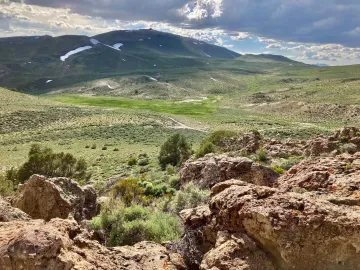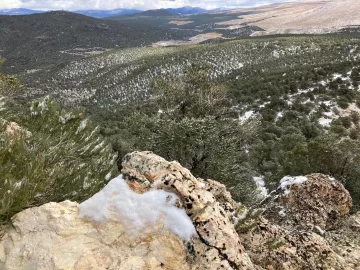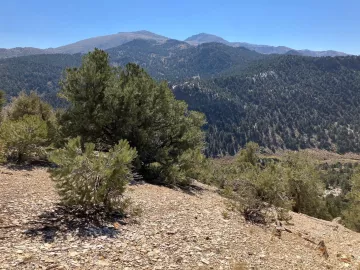By Lynn Boulton

The Forest Service closed the scoping period for the Polaris Exploration Project on February 16, 2024, a gold exploratory drilling project in the southeast corner of the Bodie Hills in Nevada. The Polaris project is between the Spring Peak gold exploration project and the Bald Peak gold exploration project and it overlaps with the Sawtooth Ridge gold exploration project. The Polaris project is five times bigger than all three of those other projects combined. The proponent, Klondex, wants to drill at up to 250 locations over a ten year period, but they have only identified where 102 of the drill sites would be. The other 148 locations would be decided based on the results of drilling at the first 102 sites.
This will be the fourth gold exploration project on the eastern part of the Bodie Hills. There is even a fifth one on the horizon, the Lodestar project. It will be drilling adjacent to the Polaris project on the Aurora Crater.

There is damage to the landscape, vegetation, and wildlife with exploratory drilling. Thirty of the Polaris drill sites would be on the slopes of East Brawley Peak. Most would be at the top at 8,000 to 9,377 feet elevation. There would be new roads to all of these 250 drill sites including on East Brawley Peak. The scars will be visible for decades. There are Bi-state Sage Grouse in the project area as well. While there would be a restriction preventing drilling activities during the mating and early nesting season, the sage grouse could be in the area year-round. The drilling for core samples would be night and day with lights at night with constant noise. Vehicles will be driving through the area making noise, moving equipment and drill rods. I can't imagine the sage grouse would stick around.

Deer travel back and forth between their winter range in Nevada and their summer range in the Bodie Hills. The Mono Lake mule deer herd travels across East Brawley Peak. The area between East Brawley Peak and Mt. Hicks is good summer range for them. The Polaris project could keep them away from the forage and the springs in the area.
Klondex has already destroyed over two hundred trees with its drilling at just three locations on the east face of Sawtooth Ridge under Mt. Chalcedony as part of the Sawtooth Ridge exploratory drilling project. There are still 13 more sites to drill on that slope and hundreds more to remove. The Polaris project would drill at 16 more new locations on the same hillside. The hillside will be dotted with bare areas and deep cuts into the hillside. To see the damage from drilling just three locations at Sawtooth Ridge, check out our slideshow. Between the two projects, the Sawtooth Ridge and Polaris projects, over 2,000 mature, cone-producing, healthy pinyon trees will be removed from that one slope in the hunt for gold. Pinyon trees grow for 35 years before they produce cones.
The third area that the Polaris project will explore is the south side of the Aurora Crater. Many of the drill sites are in the USFS' Mt. Hicks Inventoried Roadless Area. But it won't be roadless for long. Another 2,000 trees will be removed for roads and drill pads in this area too.
What gives Hecla Nevada the right to make a mess of the landscape and destroy pristine habitat? The 1872 mining law. It trumps all other environmental protection laws and gives the claimant the right to dig their minerals out of the ground no matter what's on the surface, even if they need to remove mountains to do so. Right now, they are just drilling out core samples which will push wildlife out of the area for years, will track up the area with roads, will bring noxious weeds, and waste precious groundwater. An enormous open pit gold mine will be worse.